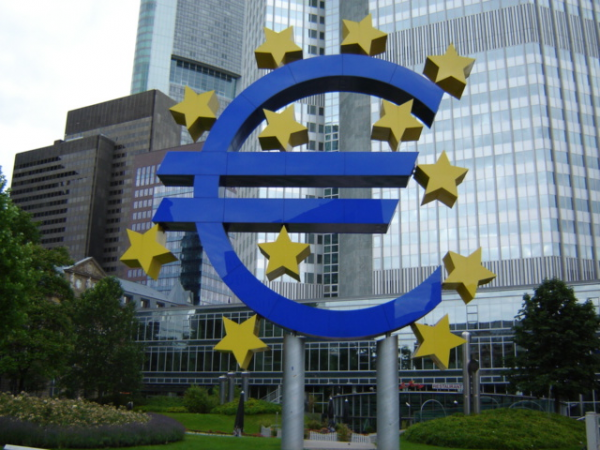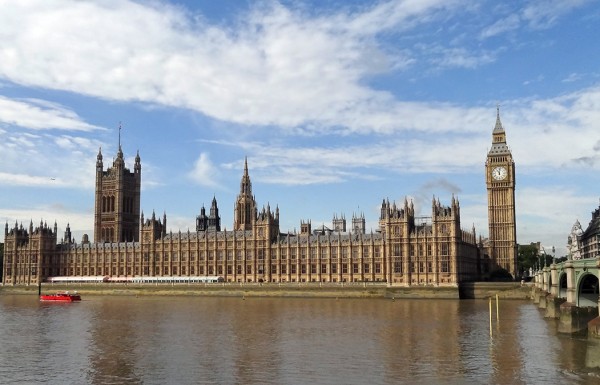 Mario Draghi, the ECB President, has indicated that the ECB is prepared to engage in further monetary stimulus. This is because of continuing weaknesses in the global economy and in particular in emerging markets.
Mario Draghi, the ECB President, has indicated that the ECB is prepared to engage in further monetary stimulus. This is because of continuing weaknesses in the global economy and in particular in emerging markets.
Although the ECB at its meeting in Malta on 22 October decided to keep both interest rates and asset purchases (€60 billion per month) at current levels, Mario Draghi stated at the press conference that, at its next meeting on December 3rd, the ECB would be prepared to cut interest rates and re-examine the size, composition and duration of its quantitative easing programme. He stopped short, however, of saying that interest rates would definitely be cut or quantitative easing definitely increased. He said the following:
“The Governing Council has been closely monitoring incoming information since our meeting in early September. While euro area domestic demand remains resilient, concerns over growth prospects in emerging markets and possible repercussions for the economy from developments in financial and commodity markets continue to signal downside risks to the outlook for growth and inflation. Most notably, the strength and persistence of the factors that are currently  slowing the return of inflation to levels below, but close to, 2% in the medium term require thorough analysis.
slowing the return of inflation to levels below, but close to, 2% in the medium term require thorough analysis.
In this context, the degree of monetary policy accommodation will need to be re-examined at our December monetary policy meeting, when the new Eurosystem staff macroeconomic projections will be available. The Governing Council is willing and able to act by using all the instruments available within its mandate if warranted in order to maintain an appropriate degree of monetary accommodation.”
Mario Draghi also argued that monetary policy should be supported by fiscal policy and structural policies (mirroring Japan’s three arrows). Structural policies should include actions to improve the business environment, including the provision of an adequate public infrastructure. This is vital to “increase productive investment, boost job creation and raise productivity”.
As far as fiscal policies are concerned, these “should support the economic recovery, while remaining in compliance with the EU’s fiscal rules”. In other words, fiscal policy should be expansionary, while staying within the limits set by the Stability and Growth Pact.
His words had immediate effects in markets. Eurozone government bond yields dropped to record lows and the euro depreciated 3% against the US dollar over the following 24 hours.
Webcasts
 ECB Press Conference on YouTube, Mario Draghi (22/10/15)
ECB Press Conference on YouTube, Mario Draghi (22/10/15)
 Draghi reloads bazooka FT Markets, Ferdinando Guigliano (22/10/15)
Draghi reloads bazooka FT Markets, Ferdinando Guigliano (22/10/15)
Articles
Mario Draghi: ECB prepared to cut interest rates and expand QE The Guardian, Heather Stewart (22/10/15)
Draghi signals ECB ready to extend QE Financial Times, Claire Jones and Elaine Moore (22/10/15)
Dovish Mario Draghi sends bond yields to new lows Financial Times, Katie Martin (23/10/15)
 What Draghi Said on QE, Policy Outlook, Global Risks and Inflation Bloomberg, Deborah Hyde (22/10/15)
What Draghi Said on QE, Policy Outlook, Global Risks and Inflation Bloomberg, Deborah Hyde (22/10/15)
ECB set to ‘re-examine’ stimulus policy at next meeting BBC News (22/10/15)
The global economy warrants a big dose of caution The Guardian, Larry Elliott (25/10/15)
ECB Press Conference
Introductory statement to the press conference (with Q&A) ECB, Mario Draghi (President of the ECB), Vítor Constâncio (Vice-President of the ECB) (22/10/15)
Questions
- Why is the ECB considering further expansionary monetary policy?
- What monetary measures can a central bank use to stimulate aggregate demand?
- Explain the effects of Mario Draghi’s announcement on bond and foreign exchange markets.
- What are the objectives of ECB monetary policy according to the its mandate?
- Should the ECB consider using quantitative easing to provide direct funding for infrastructure projects?
- What constraints does the EU’s Stability and Growth Pact impose on eurozone countries?
- What are the arguments for and against (a) the Bank of England and (b) the US Federal Reserve engaging in further QE?
- If the ECB does engage in an expanded QE programme, what will determine its effectiveness?
 After initial resistance, the brewer SAB Miller last week agreed to a merger with Anheuser-Busch InBev (AB InBev). The merging parties own over 400 brands between them. These include Budweiser, Stella Artois and Beck’s, which are owned by AB InBev, and Peroni and Grolsch by SAB Miller. Furthermore, they are currently the number one and two firms in the market respectively. If the merger goes ahead the new entity would control almost one third of global beer production.
After initial resistance, the brewer SAB Miller last week agreed to a merger with Anheuser-Busch InBev (AB InBev). The merging parties own over 400 brands between them. These include Budweiser, Stella Artois and Beck’s, which are owned by AB InBev, and Peroni and Grolsch by SAB Miller. Furthermore, they are currently the number one and two firms in the market respectively. If the merger goes ahead the new entity would control almost one third of global beer production.
This merger represents the continuation of AB InBev’s aggressive expansion plans through mergers and acquisitions as it follows its merger with Interbrew in 2004 and with InBev in 2008. It seems that one key attraction of a merger with SAB Miller is its dominant position in rapidly growing African markets.
A second motivation for the merger appears to be an attempt to counter the rise of small independent craft beer producers. For example, in the USA craft beer’s share of the market has grown from 5 to 11% since 2011. It has been suggested that the leading breweries combining forces represents one of several strategies being used to try to counter the threat of craft breweries. Additional strategies include creating their own craft products that are marketed as independant products and attempting to buy-up craft beer producers. For example, in 2011 AB InBev purchased the Goose Island brand.
Commenting on the planned merger between SAB Miller and AB InBev, a spokesman for the Campaign for Real Ale group expressed concern that:
independent beers may find it harder to get space in pubs and supermarkets because of the increased market presence of AB InBev.
Given the market positions of SAB Miller and AB InBev, it is likely that their merger will face considerable scrutiny by competition agencies in a number of jurisdictions. In fact it has been reported that plans have already been set in motion to sell SAB Miller’s interests in the USA to try to placate potential concerns from competition agencies in the USA and China.
Interestingly, SAB Miller has also protected itself by negotiating a clause that requires AB InBev to pay it $3bn if the deal falls through, for example on competition grounds. It remains to be seen what conditions competition authorities will require before the merger can go ahead and it is even possible they will try to completely block the deal.
Why beer drinkers lose in the SABMiller-AB InBev merger Fortune, John Colley (13/10/15)
Can craft beer survive AB InBev? The Budweiser maker’s acquisitions are unsettling the craft movement Bloomberg Business, Devin Leonard (25/06/15)
Questions
- How important do you think it is to consumers who a particular brand of beer is produced by?
- How serious a threat do you think independent craft beer producers are to the leading breweries?
- Outline some of the factors competition agencies will look at when they consider the merger between SAB Miller and AB InBev.
- Why might AB InBev have been willing to agree to pay a fee to SAB Miller in the event of the merger falling through?
 One of the most controversial policy changes being made by the Conservative government relates to the tax credit system. For many years, the tax and benefits system in the UK has come in for significant criticism. It has been described as overly complex, a system that doesn’t reward work and yet a system that doesn’t provide sufficient incentives to move off benefits and into work.
One of the most controversial policy changes being made by the Conservative government relates to the tax credit system. For many years, the tax and benefits system in the UK has come in for significant criticism. It has been described as overly complex, a system that doesn’t reward work and yet a system that doesn’t provide sufficient incentives to move off benefits and into work.
The changes that the government is proposing are wide-ranging and focused in part on reducing the deficit. With changes to tax thresholds, the introduction of the National Living Wage (NLW) and changes to the thresholds at which tax credits are available, the Treasury suggests that £4.5 billion will be saved per year. It also says that most working families will be made better off. However, the IFS suggests that some families could lose up to £1000 per year following the changes.
In addition to these changes, the amount of tax-free childcare is also set to increase, helping those households with young children
Tax credits are designed to help low income families and working tax credit, in particular, is aimed to encourage people to move into work. A key change to this tax credit will see the threshold at which the recipient’s payments of this benefit begin to decline move from £6420 to £3850. The withdrawal rate – the rate at which the benefit is withdrawn – will also be increased.
 The idea is that this will help to target the benefit more tightly – make it more vertically efficient. But, the concern is that this will also mean that low-income working households are worse off, despite the introduction in April 2016 of the National Living Wage. The Chancellor suggests that anyone who is working full time will be better off following these changes and that as such the changes will actively encourage work and lead to an increase in the supply of labour. This, the government argues, is a good policy for the working population, tax payers and for the wider economy.
The idea is that this will help to target the benefit more tightly – make it more vertically efficient. But, the concern is that this will also mean that low-income working households are worse off, despite the introduction in April 2016 of the National Living Wage. The Chancellor suggests that anyone who is working full time will be better off following these changes and that as such the changes will actively encourage work and lead to an increase in the supply of labour. This, the government argues, is a good policy for the working population, tax payers and for the wider economy.
This policy will remain controversial, with changes set to come in from 2016 and then 2017. It is certainly difficult to assess the impact of these changes on households and part of that stems from the complexities of the existing system, which mean that some households are eligible for some benefits, whereas others are not.
The final impact, if such changes are approved, will only be known once the tax credit changes are implemented. The House of Lords will vote on whether to ‘kill’ the tax credit cuts and Mr. Osborne, despite some concerns from Conservative back-benchers has said he is ‘comfortable’ with the policy and that the House of Lords should respect the views of the other house. Until we see the results of the vote and, even then, the impact of the changes on households, both sides will continue to produce data and estimates in support of their views.
Tax credit changes: who will be the winners and losers? BBC News, Brian Milligan (20/10/14)
Tax credit cuts: Osborne ‘comfortable’ with plan despite pressure from fellow Tories The Guardian, Rowena Mason and Heather Stewart (22/10/15)
George Osborne insists he signalled tax credit cuts before the election Independent, Jon Stone (22/10/15)
George Osborne: I am “comfortable” with tax credit cuts The Telegraph, Steven Swinford (22/10/15)
Commons Speaker warns Lords not to block tax credit cuts The Guardian, Patrick Wintour (21/10/15)
Tax credits: George Osborne ‘comfortable’ with ‘judgement call’ BBC News (22/10/15)
Osborne stands firm despite tax credits unease Financial Times, George Parker and Ferdinando Giugliano (22/10/15)
Austerity was a political choice. Now it’s starting to look like a bad one The Guardian. Heather Stewart (25/10/15)
Questions
- What are tax credits?
- How do they aim to affect the supply of labour?
- Using indifference analysis, explain how the income and substitution effects will work, following a change to tax thresholds.
- What is meant by vertical efficiency and the targeting of benefits?
- Why would the changes to tax credits help those in full-time work more than those in part-time work?
- What are the main arguments for and against the changes to tax credits?
 Obesity is on the rise, especially in children. With all the attendant health problems, concern is growing and various policies have been proposed to try to tackle the problem. One such policy is a sugar tax. This could be either a universal tax on sugar in food products or a tax just on soft drinks, many of which are very high in sugar – typically about seven teaspoons in a can or individual bottle.
Obesity is on the rise, especially in children. With all the attendant health problems, concern is growing and various policies have been proposed to try to tackle the problem. One such policy is a sugar tax. This could be either a universal tax on sugar in food products or a tax just on soft drinks, many of which are very high in sugar – typically about seven teaspoons in a can or individual bottle.
Currently the issue is being considered by the UK’s Parliamentary Health Select Committee. Jamie Oliver, the TV chef and restaurateur, argued strongly before the committee in favour of a sugar tax on fizzy drinks. He has already imposed a levy on soft drinks with added sugar in his restaurants. He maintained that it was not just the higher price from a sugar tax that would deter consumption of such drinks, but it would send out an important message that too much sugar is bad for you.
 Two days later, Dr Alison Tedstone appeared before the committee. She is chief nutritionist at Public Health England. PHE has been carrying out research into obesity and ways of tackling it. It has reviewed two types of evidence: experimental data on the effects of imposing higher prices on products with added sugar; and the effects of policies pursued in other countries. She stated to the committee that ‘universally all the evidence shows that the tax does decrease consumption’ and that ‘the higher the tax increase, the greater the effect’.
Two days later, Dr Alison Tedstone appeared before the committee. She is chief nutritionist at Public Health England. PHE has been carrying out research into obesity and ways of tackling it. It has reviewed two types of evidence: experimental data on the effects of imposing higher prices on products with added sugar; and the effects of policies pursued in other countries. She stated to the committee that ‘universally all the evidence shows that the tax does decrease consumption’ and that ‘the higher the tax increase, the greater the effect’.
The government was not planning to publish the report at this stage, but under considerable pressure agreed to its publication.
The articles look at the prospects for a sugar tax, its likely effects if one were introduced and at the politics of the situation, which are likely to result in such a tax being rejected.
Videos and audio podcasts
 Can you be trusted to eat less sugar? BBC News, Hugh Pym (22/10/15)
Can you be trusted to eat less sugar? BBC News, Hugh Pym (22/10/15)
 ‘Introduce sugar tax’, health officials tell government Channel 4 News, Victoria Macdonald (22/10/15)
‘Introduce sugar tax’, health officials tell government Channel 4 News, Victoria Macdonald (22/10/15)
 Jamie Oliver: ‘Bold’ sugar tax to beat childhood obesity BBC News, Hugh Pym (19/10/15)
Jamie Oliver: ‘Bold’ sugar tax to beat childhood obesity BBC News, Hugh Pym (19/10/15)
 Be bold on sugar tax, Jamie Oliver says BBC News, Nick Triggle (19/10/15)
Be bold on sugar tax, Jamie Oliver says BBC News, Nick Triggle (19/10/15)
 Health scientists’ links with sugar industry queried BBC News, Dominic Hughes (12/2/15)
Health scientists’ links with sugar industry queried BBC News, Dominic Hughes (12/2/15)
 Mexico’s soda tax is starting to change some habits, say health advocates PRI’s The World on YouTube, Jill Replogle (2/12/14)
Mexico’s soda tax is starting to change some habits, say health advocates PRI’s The World on YouTube, Jill Replogle (2/12/14)
Articles
Jeremy Hunt told sugar tax would cut childhood obesity as review Government tried to suppress is published Independent, Charlie Cooper (20/10/15)
Sugar tax could help solve Britain’s obesity crisis, expert tells MPs The Guardian, Ben Quinn (21/10/15)
Jamie Oliver ‘expects kicking’ over sugar tax The Guardian, Jessica Elgot (22/10/15)
Sugar tax, fat fines and gold coins: new ways cities are tackling obesity The Guardian, Sarah Johnson (22/10/15)
Sugar tax and offers ban ‘would work’ BBC News (22/10/15)
Public Health England tells UK government: Sugar taxes do work FoodNavigator.com, Niamh Michail (21/10/15)
Childhood Obesity Partially Down To The Coco Pops Monkey, Sugar Tax Report Claims Huffington Post, Sarah Ann Harris (21/10/15)
Health officials back a sugar tax – and want the Coco Pops monkey banned The Telegraph, Laura Donnelly (20/10/15)
Jeremy Hunt embroiled in row over sugar tax report The Telegraph, Laura Donnelly (11/10/15)
Revealed: ‘Sugar tax report’ which was suppressed by Government The Telegraph, Laura Donnelly (22/10/15)
Public Health England obesity report: the key points The Guardian, James Meikle (22/10/15)
Cameron says no to sugar tax Mail Online, Jason Groves and Daniel Martin (21/10/15)
Sugar tax: Former health minister backs levy to prevent NHS ‘obesity crisis’ Independent, Charlie Cooper (21/10/15)
Journal articles and reports
Sugar Reduction: The evidence for action Public Health England, Dr Alison Tedstone, Victoria Targett, Dr Rachel Allen and staff at PHE (22/10/15)
Effects of a fizzy drink tax on obesity rates estimated NHS CHoices (1/11/13)
Overall and income specific effect on prevalence of overweight and obesity of 20% sugar sweetened drink tax in UK: econometric and comparative risk assessment modelling study British Medical Journal, Adam D M Briggs, Oliver T Mytton, Ariane Kehlbacher, Richard Tiffin, Mike Rayner and Peter Scarborough (2013;347:f6189)
Perspectives: Time for a sugary drinks tax in the UK? Journal of Public Health, Oliver Mytton (29/5/14)
Sugar reduction: Responding to the challenge Public Health England, Dr Alison Tedstone, Ms Sally Anderson and Dr Rachel Allen and staff at PHE (June 2014)
Questions
- What factors are driving the current high consumption of sugar?
- How is the concept of price elasticity of demand relevant to the effectiveness of imposing a sugar tax?
- What would determine the incidence of such a tax between food and drink manufacturers and consumers?
- Would such a tax be progressive, regressive or neutral? Explain.
- What other policies could be pursued to discourage the consumption of sugar? Discuss their likely effectiveness and compare them with a sugar tax.
- What externalities are involved in sugar consumption? How would you set about measuring them? Should a sugar tax be set at a rate that internalises the estimated externalities?
- Examine the objections to imposing a sugar tax.
 The housing market can be divided into two areas: owner-occupied and rental. Many news articles have focused on the problems in owner-occupation with house prices preventing first-time buyers from getting on the property ladder and forcing young people to move out of areas where they grew up. Second homes, foreign investors and a shortage of affordable housing have all added to the problems in this part of the housing market. But what about the rental market?
The housing market can be divided into two areas: owner-occupied and rental. Many news articles have focused on the problems in owner-occupation with house prices preventing first-time buyers from getting on the property ladder and forcing young people to move out of areas where they grew up. Second homes, foreign investors and a shortage of affordable housing have all added to the problems in this part of the housing market. But what about the rental market?
Many people have been forced to consider rental accommodation due to the affordability issues with owner-occupation. But, with more and more people demanding rental properties, affordability in this sector is also becoming a problem. Latest figures from Your Move and Reeds Rains suggest that rents have increased  by around 6.3% over the past year to an average of £816 per month. This has occurred, despite inflation being at very low levels.
by around 6.3% over the past year to an average of £816 per month. This has occurred, despite inflation being at very low levels.
The average increase in rents has varied across the UK, as is the case with average increases in house prices, but looking at the UK-wide data in both cases, house price growth appears to have been out-stripped by rental price growth. This spells trouble for the government which is already under pressure to address the housing shortage. Adrian Gill, Director of the two firms has said:
“Rents have been growing faster than ever – particularly in real terms, given inflation has essentially been zero since February. Across the country, towns and cities are seeing demand from local tenants outstrip the supply of properties to let, with inevitable effects on rents. There is little sign yet of this cooling substantially as the autumn progresses.”
So definitely bad news for those in rented accommodation, especially in places like London, where average rents are up 11.6%, and the East of England, where they have increased by 8.8%. However, this report will make for happier reading for landlords, who will not only see an increase in their rental income, but will also recognise that the value of the house itself has increased.
The following articles consider the housing market and in particular, the latest data on rental prices.
Average monthly rent hits record high of £816, highlighting housing shortage The Guardian, Rupert Jones (16/10/15)
Tenants ‘face 6.3% annual rent rise’ BBC News, Kevin Peachey (16/10/15)
London Skyscraper rents rise 11%, Hong Jong remains priciest Bloomberg, Neil Callanan (14/10/15)
Buy-to-let investors earn near 10% a year Introducer Today, Harvey Jones (16/10/15)
Rent rises slower in Scotland Herald Scotland, Jody Harrison (21/10/15)
Record rents as property shortage deepens Sky News (16/10/15)
Generation rent: the reluctant rise of the older tenant The Telegraph, Hannah Betts (3/10/15)
Questions
- Use a demand and supply diagram to explain the housing problem.
- If the main cause of the housing issue is house price rises, why has this affected the rental market so badly?
- What are the solutions to the housing problem? In each case, explain whether it is a demand- or supply-side solution.
- Why is the rate of consumer price inflation important when thinking about house price or rental price increases?
- Given the regional differences in house prices, does the government have a role to intervene here? How could governments affect regional variations in house prices?
 Mario Draghi, the ECB President, has indicated that the ECB is prepared to engage in further monetary stimulus. This is because of continuing weaknesses in the global economy and in particular in emerging markets.
Mario Draghi, the ECB President, has indicated that the ECB is prepared to engage in further monetary stimulus. This is because of continuing weaknesses in the global economy and in particular in emerging markets.slowing the return of inflation to levels below, but close to, 2% in the medium term require thorough analysis.
 ECB Press Conference on YouTube, Mario Draghi (22/10/15)
ECB Press Conference on YouTube, Mario Draghi (22/10/15) Draghi reloads bazooka FT Markets, Ferdinando Guigliano (22/10/15)
Draghi reloads bazooka FT Markets, Ferdinando Guigliano (22/10/15) What Draghi Said on QE, Policy Outlook, Global Risks and Inflation Bloomberg, Deborah Hyde (22/10/15)
What Draghi Said on QE, Policy Outlook, Global Risks and Inflation Bloomberg, Deborah Hyde (22/10/15)









